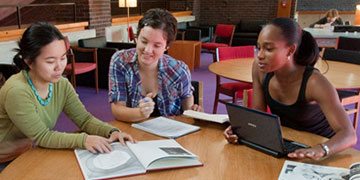To access this work you must either be on the Smith College campus OR have valid Smith login credentials.
On Campus users: To access this work if you are on campus please Select the Download button.
Off Campus users: To access this work from off campus, please select the Off-Campus button and enter your Smith username and password when prompted.
Non-Smith users: You may request this item through Interlibrary Loan at your own library.
Publication Date
2022-12
Document Type
Capstone
Study Type
ENV 312
Department
Environmental Science and Policy
Advisors
Alex Barron
Abstract
As an institution that has existed for over 150 years, Smith College faces the challenge of adapting as times change while honoring its own history. This challenge is more relevant than ever as global climate change dramatically alters the world as we have known it. Smith has already begun many environmental efforts, but the campus landscape lags behind in terms of demonstrating the college’s commitment to sustainability. Students consistently push for environmentally motivated changes to the Smith landscape, with numerous projects which research and suggest alterations to the landscape, but few of these suggestions have ever come to fruition. Building off of Bobrow and Martinez's 2018 ENV 312 project, “Effective Student Research on Smith’s Landscape: What Worked, What Didn’t, and Where We Go From Here”, we investigated ways in which students could better work together with Smith to realize the changes they hope to bring to the campus landscape. This investigation was carried out through campus walks, reading through past student work and the new Landscape Master Plan, and interviewing relevant members of the Smith community. Our most significant findings included the discovery that integrating student voices into landscape planning at Smith can be significantly improved, as there is little student interaction with Grounds and there is currently no student on the Campus Planning Committee. Additionally, we found that by better utilizing ScholarWorks and connecting with the correct decision makers at Smith, Smithies may be able to suggest projects more suited to the school’s constraints and take advantage of opportunities, such as the Geothermal Energy Project. Using the findings of our research, we created tools for future students interested in suggesting changes to Smith’s landscape, one being a map of actors at Smith one should contact when suggesting a landscape change, and the other being an interactive web tool that allows students to easily find information on suggested landscape changes.
Rights
© 2022; Jane Andrews, Frances Li, Cora Lochner, and Waleska Reyes
Recommended Citation
Andrews, Jane; Li, Francis; Lochner, Cora; and Reyes, Waleska, "Pathways to Integrating Student Projects Into Campus Planning" (2022). Capstone, Smith College, Northampton, MA.
https://scholarworks.smith.edu/other_projects/212
Smith Only:
Off Campus Download


